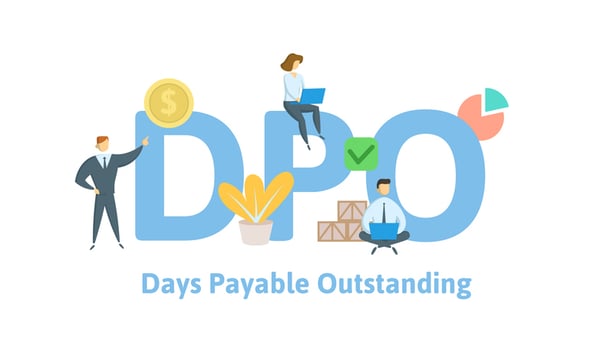Improving cash flow, keeping track of tax and regulatory changes, and managing remote teams are some of the current challenges that finance and accounting departments are facing. But the good news is that implementing digital invoice processing with a document management system (DMS) enables your team to eliminate processing errors and be better equipped to succeed in the future.
Common challenges that digital invoice processing with a DMS solves to prevent processing errors
1. Manual data entry causes lost productivity

2. Undefined or undocumented business processes
Some processes only exist in the heads of certain employees. This makes your department reliant on the institutional knowledge of specific people. If one of them leaves your company, they take their expertise with them. And it’s difficult to ensure that the correct processes are always followed.
When you set up digital invoice processes and workflows in a document management system, the official process is followed automatically. Process steps are defined according to your business rules and built into the workflows. In addition, audit trails track activities, such as approvals, to ensure that invoices and other process-dependent documents go through established business best practices. Automation increases productivity and eliminates guesswork and human invoice processing errors.
See how the UK-based retailer eliminated paper within their AP team, reducing costs and fostering remote accessibility. Continuous improvement and exploration mark Glenkeir Whiskies' dynamic digital transformation journey.
3. Failure to make on-time payments

Slow invoice processing can result in extra fees, credit holds and suspension of deliveries. On the flip side, you miss out on early payment discounts. Manual invoice processing makes it difficult to keep track of deadlines and identify bottlenecks that can lead to invoice processing errors. A document management solution significantly reduces the time between when an invoice is received, approved and paid. It automatically keeps track of payment due dates, sending reminders, routing invoices to the designated approver or to a backup person if an approver is out of the office.
4. Lack of insight into cash flow
If you don’t know when invoices are due, it’s difficult to predict cash flow. But when you use a central repository to store all your documents, and customer and vendor communication, you get an accurate, real-time overview of monthly spending and outstanding payables. You can easily track the amount spent with each vendor, control supplier costs by negotiating better rates and never miss a payment again. Improving the efficiency of accounts payable processes is an essential part of the effort to ensure steady cash flow. With digital invoice processing, you can easily keep track of metrics like expenses, past-due invoices and operating cash flow. This knowledge will help you plan for the future because you’ll see changes or fluctuations you can use to inform other decisions.
These insights can also help you spot potential cash flow problems before they impact your business. You might discover certain vendors consistently submit invoices with errors, for example. Or you might uncover approval bottlenecks that slow down payment cycles and restrict cash flow. Taking a data-driven approach ensures your accounts payable function becomes a valuable contributor to your organisation's financial health.
4. Supporting an overburdened staff during audits

You don’t want your team to spend weeks or months compiling and organising your files to prepare for an audit. In a paper-based system, employees pull individual files and documents from a filing cabinet and make photocopies. This puts stress on staff and the extra time they spend answering the auditor’s questions keeps them from doing their daily work.
An electronic document management system helps save enormous amounts of time and effort. Your documents are organised in a secure system that makes it easy to quickly share the required files with auditors. It takes the pain out of the process by making sure you never lose or misfile invoices or supporting documents. Instant access to documents prepares you to respond to any questions auditors ask. And providing secure, online access to the auditors frees your staff to concentrate on their own jobs while preventing invoice processing errors during critical audit periods.
6. Avoiding compliance woes
Has your company prepared for increased monitoring and analysis from financial regulators? Are you sure you can avoid the risk of fines, penalties and lawsuits?
When there’s a failure to establish internal controls and accountability, it’s difficult to prove data integrity. If retention schedules are enforced manually, that can also lead to a potential failure to meet regulatory requirements.
Your document management system should include version control and a robust audit trail that enables you to detect errors in invoice processing and prevent fraud. Staff members can be allowed to access certain documents via a unique username or password. The authentication creates a record of who accessed a document, when they accessed it and what action they took. This restricts unauthorised activity, and redaction enables further protection of confidential data. Notification of violations of security protocols through activity reports can provide a further level of protection.
7. Not starting your digital transformation now
.jpg?width=600&height=383&name=iStock-1312258673%20(1).jpg)
Research from the Hackett group and Gartner put the average cost of processing an invoice in the UK at between £4 and £25, with certain complex or error-prone processes costing up to £50 per invoice. Still think that a document management and automated workflow solution isn’t in your budget? Implementing a document management solution makes a huge difference in your department’s efficiency, resulting in a substantial return on investment.
Modern invoice processing offers your team significant advantages. Get started today.


